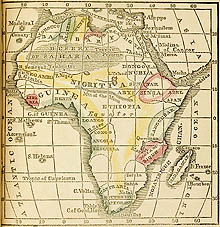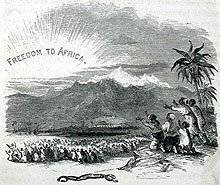
From Primary Geography for Children
By C. and H. Beecher (1833)
The motives of the organizers of the colonization movement remain in dispute, as you'll see in the pieces gathered here. Stowe's choice of sending most of the "black" characters to Africa at the end of Uncle Tom's Cabin was one of the most controversial aspects of the novel with abolitionist and African American readers. It may have been one of the most popular with white readers. It is also one of the ways that her novel resembles the stories that others wrote to oppose it (see, for example, Sarah Hale's Liberia in the archive's ANTI TOM NOVELS section).

Illustration by Hammat Billings
1853 Edition of Uncle Tom's Cabin
A Discussion by Black & White Abolitionists
